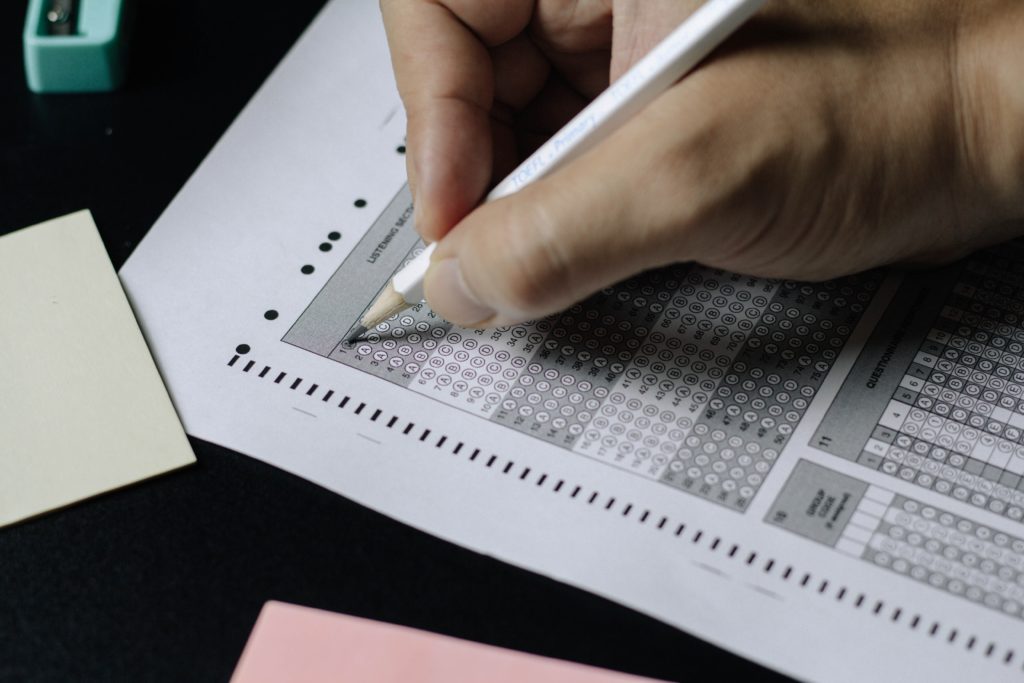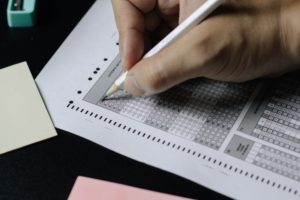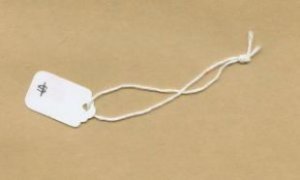
By Sarah Keller
Antitrust laws ensure that companies are not artificially impacting or controlling demand for products.[1] Higher education institutions are uniquely situated multibillion-dollar businesses whose product is not simply degrees—but also scholarship, athletics, and the arts.[2] Although these institutions have qualities that differentiate them from traditional businesses, they remain subject to the Sherman Act’s antitrust regulations.[3] Notably, the Sherman Act applies regardless of the institution’s financial structure or funding sources. Educational nonprofit status does not shield Sherman Act coverage and oversight applies whether the institution is for-profit or nonprofit.[4] Additionally, state institutions should be specifically aware that state actor antitrust immunity[5] is often narrowly construed when applied to public institutions of higher education, subjecting both public and private institutions to antitrust regulation.[6] Regardless of the institution’s size, structure, or funding sources, the institution competes with competitors, and is therefore subject to the same regulations as more traditional businesses.
Generally, antitrust violations require a conspiracy, knowingly joined and formed, to affect interstate commerce or restrain competition.[7] The conspiracy or collusive agreement need not be a formal contractual agreement and can arise informally.[8] Enforcement of informal agreements may create tension with higher education’s spirit of collaboration.[9] Often, colleges and universities use their peers to gain insight into “best practices” and share approaches to challenges common to the cohort.[10] While the exchange of approaches and ideas may be an important and accepted practice for like-institutions, under federal antitrust law this action remains the exchange of ideas between competitors.[11] As a result, antitrust lurks unassumingly behind many of the general practices of higher education administration.[12] In antitrust regulation, collaboration among competitors does not raise antitrust concerns unless it restrains competition.[13] In higher education, competition occurs not merely in outputs such as research, athletics, and educational outcomes, but also in inputs through student admissions.
College admissions provide some of the strongest competition in the country. In 2018, Harvard accepted less than 5 percent of its 43,000 applicants.[14] The National Association of College Admissions Counseling reports that selective universities receive over one-third of all college applications yet enroll only 22 percent of freshman students.[15] The level of competition in admissions is palpable,[16] adjudicated,[17] and hoodwinked[18] constantly.
Most recently, a debate about college admissions testing has created a competitive debate.[19] Colleges without testing requirements get more applicants,[20] increasing their pool of admittable students and their potential competitive advantage. Yet, colleges should be aware that a joint decision to remove testing may be considered a removal of competition through improper cooperation between competitors. For example, the agreement between medical schools to participate in a uniform residency admission protocol through the National Resident Matching Program (“NRMP”)[21] required a judicial and codified exception from antitrust regulation to continue operating.[22] The NRMP creates cooperation between competitor medical schools, which raised an antitrust concern and required an exception to continue.[23] This exception was granted based on the NRMP system’s established nature.[24] Creation of an agreement to remove admissions testing, as a new and unestablished agreement, would likely not receive the same deference.[25]
Prior to the pandemic, the movement away from admissions testing was growing.[26] Early removal of testing occurred at less selective institutions; however, more selective universities followed suit in 2018 when the University of Chicago removed testing standards in admissions.[27] Following Chicago’s decision, small and selective institutions such as Bucknell University and DePauw University also made the shift away from testing.[28] The issue reached national publicity, pandemic notwithstanding, in 2020 when the California system chose to remove testing,[29] despite research from their own faculty finding that testing is the best predictor of collegiate success.[30]
The pandemic-induced moratorium on admissions testing requirements is a band-aid to a bullet hole, and the issue remains unresolved beyond the 2022 admissions cycle.[31] While COVID-19 changed admissions protocols through necessity, continued change should be made thoughtfully to avoid subjecting the institution to antitrust issues. Modifying who attends the school, or who competes for positions at the school, if done collusively will implicate antitrust concerns.[32] Instructive caution comes from the Department of Justice’s recent decision not to bring charges against eight D.C.-area prep schools. In 2018 eight prep schools jointly announced a curriculum transition away from providing Advanced Placement (“AP”) courses.[33] After extensive investigation, the Department of Justice dropped charges in January 2021 out of respect for the heavy burden on schools as a result of the pandemic. This decision was despite evidence of an agreement between the schools to modify their curricula.[34] Relief was granted due to extenuating circumstances; however, relief is situational, and this investigation offers helpful guidance.
The competitive landscape between the prep schools would have shifted if only a few schools had eliminated AP courses. Offering AP courses can affect applicant interest, which subsequently impacts tuition dollars and financial competition. The same is true for removal of college admissions testing. Colleges choosing to forego testing requirements receive more applications,[35] increasing their pool of admittable students and their potential competitive advantage. Logically, competition between collegiate institutions will exist without test scores, just like competition between the prep schools would exist without AP courses.[36] The concern here is the existence of an agreement between competitors to implement the change, which would constitute impermissible cooperation.
Collusive action need not be malicious.[37] Defending collusive action that controls or modifies the competitive landscape with assertions of corrective or good intent may not be enough. Again, the Department of Justice’s investigation into the D.C. prep schools is instructive. The prep schools framed their curriculum decision as a response to the “diminished utility of AP courses,” stating the goal of the AP program is not its modern reality.[38] Similarly, collegiate institutions removing testing requirements cite that standardized testing has not fulfilled its original intent of diversifying the Ivy League.[39] This lack of fulfillment assertion comports with recognition among some schools, advocates, and scholars that standardized testing favors wealthy and non-minority students who can afford test prep and multiple test attempts.[40] However, antitrust does not distinguish between selfish or social welfare motives: collusive action cuts both ways.[41] Collusive removal of competition, regardless of a socially beneficial intent, is a modification of competition between schools. If admissions testing modification happens in concert with peers, colleges may be subject to antitrust investigations.
This is not to say testing should not be removed, simply that colleges should be careful to make changes after concerted internal deliberation. The California system’s new admissions policy is the decision of one system with one overarching President and Board of Regents.[42] This action is not a decision impacting competition because this decision is within a system, not between systems. While other states also have state-wide public higher education systems,[43] this is not always the case. A state with separately operating state institutions, each with unique governance structures, could be subject to antitrust investigation if it colluded with outside institutions on a decision impacting competition, such as removal of admissions testing. Impermissible external deliberation can occur within and between states and remains collusive whether the institutions are public or private.[44]
While communication on “best practices” is considered commonplace in higher education administration,[45] administrators should keep deliberation internal when developing a strategy for accepting or not accepting testing in college admissions.[46] Relief granted to educational institutions in light of COVID-19[47] will not last indefinitely. Social aims are not exempt from antitrust if they have an anticompetitive result,[48] and collusion to remove test score quantifiers in the application process could, because of its impact on competition, place schools at risk. Institutions exploring the removal of testing from admissions requirements should proceed with caution.
[1] Debra Wilson, Proceed with Caution: How Antitrust Law Affects Schools, The Nat’l Ass’n of Indep. Schs. (2017), https://www.nais.org/magazine/independent-school/summer-2017/proceed-with-caution/.
[2] Nat’l Ctr. for Educ. Stat., Postsecondary Institution Revenues (2020), https://nces.ed.gov/programs/coe/indicator_cud.asp#:~:text=In%202017%E2%80%9318%2C%20total%20revenues,at%20private%20for%2Dprofit%20institutions. Over $671 billion flowed into degree-granting higher education institutions in 2018. Id.
[3] 15 U.S.C. §§ 1–7; see Mary Strimel, DOJ Enforcement Update, McDermott Will & Emery: Antitrust Alert (Apr. 25, 2018), https://www.antitrustalert.com/2018/04/doj-enforcement-update-higher-education/; Jeffrey Selingo, The Best Ways to Fix College Admissions Are Probably Illegal, The Atl. (Apr. 27, 2018), https://www.theatlantic.com/education/archive/2018/04/college-admissions-antitrust/559088/. Examples of antitrust issues occurring in higher education include financial aid decisions, faculty recruitment, and use of the Common Application. Molly Moriarty Lane et al., Colleges and Universities: Litigation Challenges and Risk Mitigation in the Face of COVID-19, Morgan Lewis: LawFlash (May 21, 2020), https://www.morganlewis.com/pubs/2020/05/colleges-and-universities-litigation-challenges-and-risk-mitigation-in-the-face-of-covid-19-cv19-lf; see also United States v. Brown Univ., 5 F.3d 658 (3d Cir. 1993).
[4] Strimel, supra note 3.
[5] Ann O’Brien & Brady Cummins, Limits of State Action Protection for Colleges and Universities, BakerHostetler: Antitrust Advoc. (June 11, 2020), https://www.antitrustadvocate.com/2020/06/11/limits-of-state-action-protection-for-colleges-and-universities/#:~:text=The%20antitrust%20laws%20prohibit%20colleges,recruitment%20of%20students%20and%20faculty; Jennifer R. Scullion, When Are Universities and Executive Agencies “State Actors” for Antitrust Immunity?, Proskauer: Minding Your Bus. Litig. (June 24, 2016), https://www.mindingyourbusinesslitigation.com/2016/06/when-are-universities-and-executive-agencies-state-actors-for-antitrust-immunity/#:~:text=More%20than%20fifty%20years%20ago,relationship%20with%20%E2%80%9CParker%E2%80%9D%20immunity.
[6] O’Brien & Cummins, supra note 5.
[7] U.S. Dep’t of Just., Antitrust Resource Manual (Archived) (Nov. 2017), https://www.justice.gov/archives/jm/antitrust-resource-manual-1-attorney-generals-policy-statement.
[8] Lane et al., supra note 3.
[9] Id.; O’Brien & Cummins, supra note 5.
[10] Lane et al., supra note 3; O’Brien & Cummins, supra note 5; see also Paul Basken, COVID Response ‘Could Expose U.S. Colleges to Antitrust Laws,’ Times Higher Ed. (Apr. 30, 2020), https://www.timeshighereducation.com/news/covid-response-could-expose-us-colleges-antitrust-laws.
[11] Lane et al., supra note 3.
[12] Basken, supra note 10.
[13] Michael Bloom, Doing Good Well, Fed. Trade Comm’n, Bureau of Competition (Oct. 20, 2016, 3:39 p.m.), https://www.ftc.gov/news-events/blogs/competition-matters/2015/10/doing-good-well.
[14] Selingo, supra note 3.
[15] Nat’l Ass’n of Coll. Admissions Counseling, 2017 State of College Admissions: Chapter 1 College Applications (2017), https://www.nacacnet.org/globalassets/documents/publications/research/soca17_ch1.pdf.
[16] Abby Jackson, It Was the Hardest Year on Record to Get in to Elite Colleges: Admissions Experts Explain Why, Bus. Insider (Dec. 20, 2017, 11:33 p.m.), https://www.businessinsider.com/former-ivy-league-admissions-directors-say-its-harder-than-ever-to-get-into-elite-schools-2016-11.
[17] Scott Jaschik, Appeals Court Backs Harvard on Affirmative Action, Inside Higher Ed. (Nov. 16, 2020), https://www.insidehighered.com/admissions/article/2020/11/16/appeals-court-backs-harvard-affirmative-action.
[18] Kate Taylor, Parents Paid to Open College Doors, Now They’re Spending to Limit Prison Time, N.Y. Times (Oct. 22, 2019), https://www.nytimes.com/2019/10/03/us/college-admissions-scandal-consultants.html.
[19] The Editorial Board, The Pandemic Changed College Admissions. That’s a Good Thing, Bos. Globe (Feb. 3, 2021 4:00 a.m.), https://www.bostonglobe.com/2021/02/03/opinion/pandemic-changed-college-admissions-thats-good-thing/.
[20] Scott Jaschik, The College Board’s (Smaller) Future, Inside Higher Ed. (Jan. 25, 2021), https://www.insidehighered.com/admissions/article/2021/01/25/changes-sat-prompt-discussion-future-college-board.
[21] The Match: Nat’l Resident Matching Prog., https://www.nrmp.org/about-nrmp/ (last visited Feb. 17, 2021).
[22] Jung v. Ass’n of Am. Med. Coll., 339 F. Supp. 2d 26, 46 (D.D.C. 2004) (dismissing a previous finding that plaintiffs of an antitrust class action adequately alleged the existence of a collusive agreement to restrain competition in recruitment for medical residency interns through use of the National Resident Matching Program after promulgation of 15 U.S.C. § 37b). Jung and the class alleged the National Resident Matching Program , as the only avenue for placement in medical residency programs, constituted a collusive action restraining competition under the Sherman Act. Jung v. Ass’n of Am. Med. Coll., 300 F. Supp. 2d 119, 125 (D.D.C. 2004). Following the initial motion practice in February 2004 and the prior to further motion practice in August 2004, President Bush signed the Pension Funding Equity Act of 2004. Pub. L. No. 108-218, 118 Stat. 596. The Act contained a specific antitrust exception for medical schools due to the NRMP’s established nature. 15 U.S.C. § 37b(a)(1)(A).
[23] 15 U.S.C. § 37b.
[24] Id. § 37b(a)(1)(A).
[25] Selingo, supra note 3.
[26] Scott Jaschik, Chicago Drops SAT/ACT Requirement. Will Others Follow?, Inside Higher Ed. (June 19, 2018), https://www.insidehighered.com/admissions/article/2018/06/19/university-chicago-drops-satact-requirement.
[27] Id.
[28] Id.
[29] Shawn Hubler, Why Is the SAT Falling Out of Favor?, N.Y. Times (May 23, 2020), https://www.nytimes.com/2020/05/23/us/SAT-ACT-abolish-debate-california.html.
[30] Id. (comparing test scores to high school grades). This research study itself, however, contradicts a Georgetown University report finding that based on test scores alone, only 53 percent of students at the 200 most selective schools would have been admitted. Mack DeGeurin, 27 Great Schools That Don’t Require SAT or ACT Scores, Bus. Insider (July 2, 2019 4:09 p.m.), https://www.insider.com/27-great-schools-that-dont-require-sat-or-act-scores-2019-7.
[31] Nick Anderson, Applications Surge After Big-Name Colleges Halt SAT and ACT Testing Rules, Wash. Post (Jan. 29, 2021 4:28 p.m.), https://www.washingtonpost.com/local/education/harvard-uva-sat-act-requirement-college-applications/2021/01/29/90566562-6176-11eb-9430-e7c77b5b0297_story.html.
[32] Strimel, supra note 3.
[33] Press Release, Dep’t of Just., Justice Department Concludes Its Investigation of D.C.-area Schools’ Decision to Stop Offering Advanced Placement Courses (Jan. 11, 2021), https://www.justice.gov/opa/pr/justice-department-concludes-its-investigation-dc-area-private-high-schools-decision-stop.
[34] Id.
[35] Jaschik, supra note 20.
[36] Lee Shulman Bierer, Countdown to College: Why Is College Admission Getting More Competitive?, Omaha World-Herald (Oct. 23, 2020), https://omaha.com/lifestyles/parenting/countdown-to-college-why-is-college-admission-getting-more-competitive/article_392fda55-502b-5eaf-bd9e-46c466ecd282.html (“Among the top tier of public and private liberal arts institutions, applications have increased by one-third or more during the last five years. Yet the available spaces have remained constant.”); see also Sherri Dalphonse et al., Private School Confidential: Things Washington Parents Need to Know, Washingtonian (Oct. 18, 2018), https://www.washingtonian.com/2018/10/18/private-school-confidential-25-things-washington-parents-need-to-know/#1-Campuses-have-gotten-swankier- (stating the top D.C. prep schools “still have much lower acceptance rates—and applicant pools have gotten more competitive”).
[37] Jung v. Ass’n of Am. Med. Coll., 339 F. Supp. 2d 26, 37 (D.D.C. 2004) (“If lawful acts are used as the means to effectuate an antitrust conspiracy, the conspiracy itself is still unlawful.”).
[38] Scott Jaschick, Rejecting AP Courses, Inside Higher Ed. (June 19, 2018), https://www.insidehighered.com/news/2018/06/19/eight-private-high-schools-washington-area-are-dropping-out-ap-program (“The AP program, the Washington private high schools say, was started with the goal of helping students finish college early, and yet few students do so.”).
[39] Hubler, supra note 29.
[40] Id.
[41] Bloom, supra note 13. “For better or worse, folks in the educational field think that what they do is so important on a societal level that they’re exceptional, and that the ordinary rules just shouldn’t apply to them . . . and none of that’s true.” Basken, supra note 10.
[42] U. of Cal., Organizational Chart (Dec. 12, 2020), https://www.ucop.edu/president/_files/uc-org-chart.pdf.
[43] See, e.g., The U. of Tex. Sys., https://www.utsystem.edu/administration (last visited Feb. 17, 2021); The State U. of N.Y., https://www.suny.edu/about/ (last visited Feb. 17, 2021).
[44] O’Brien & Cummins, supra note 5.
[45] Lane et al., supra note 3.
[46] Jung v. Ass’n of Am. Med. Coll., 339 F. Supp. 2d 26, 37 (D.D.C. 2004) (“If lawful acts are used as the means to effectuate an antitrust conspiracy, the conspiracy itself is still unlawful.”); see also Lane et al., supra note 3; O’Brien & Cummins, supra note 5.
[47] See Press Release, supra note 33.
[48] See Basken, supra note 10; Bloom, supra note 13.
Post Image by Nguyen Dang Hoang Nhu on Unsplash.





